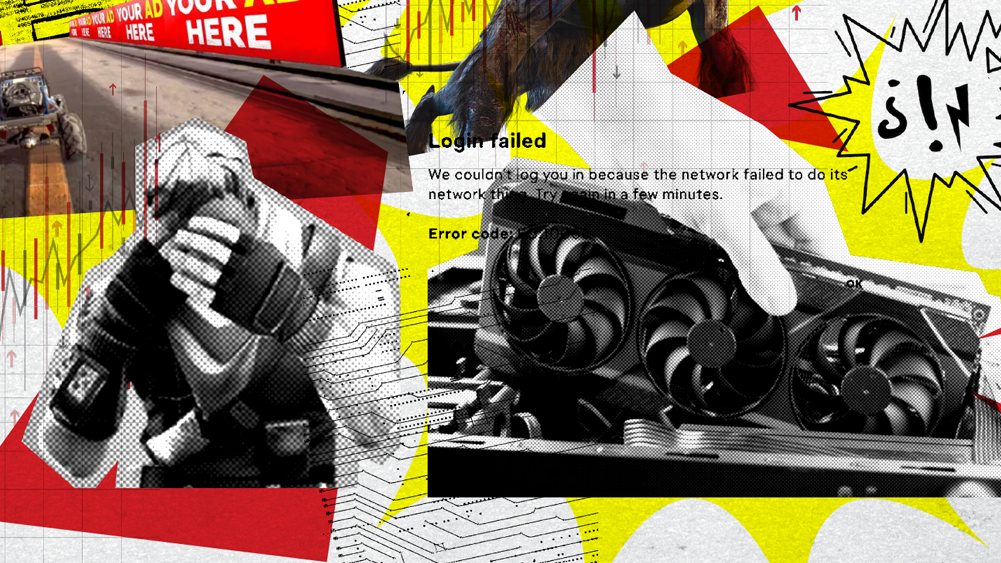
Listen. I understand the irony of using this headline given the state of this page for anyone on a mobile browser without an ad blocker. That’s the world we have.
It wasn’t always like this.
It can be hard to remember, but it was once possible to know peace. There were ads, sure. The pop-up advertisement was a generational sin. But broadly, there was an understanding: The presence of ads was the price you paid to interact with an otherwise free service.

We’re spending the week airing all our grievances with gaming and computing in 2025. Hit up the Gripes Week hub for more of what’s grinding our gears.
They were hateful, but contained. We hadn’t yet mastered the terrible art of fitting video players everywhere they shouldn’t be. Screen real estate, business convention, and the limitations of media delivery technology meant ads could only devour so much of our attention.
The vampire has long since forced itself inside the house.
Today, there are ads on the e-reader on my nightstand. There are ads on my TV’s home screen. There are ads where I pay to listen to music. There are ads where I once paid to watch shows without ads, sometimes for the show I’ve already chosen to watch. There are ads on my login screen, in my start menu, in my notifications tray, in every app on my phone that interrupts the spending I was already planning to do with a full-screen offer for a line of credit and promotional discount.
If I buy the latest Destiny expansion, there will be an ad for that same expansion after I log in—and a helpful funnel towards the current holiday event’s cosmetic bundle, too. If I buy the latest Call of Duty, I’ll be assailed with skin banners, BlackCell season passes, and CoD points.
Today, product quality is only relevant as long as it makes a tantalizing lure. Effort that could be spent on an improved user experience—a more polished game, a version of Windows with any cohesive menu philosophy, an Android phone that doesn’t stall out while trying to proselytize its latest layer of AI cruft—is seen by the business-addled as better invested in ensuring there is always a limited-time offer thrumming in our peripheral vision.
Every service, platform, and piece of media comes with the exhaustion of a car dealer’s upcharge. I have a brain that evolved to eat nuts and berries in a pleasant cave, not to endure a thousand ads per day.
There are oases where ads aren’t, or where they’re at least kept in tasteful check: indie titles, some singleplayer games, subscription newsletters, physical books, thrift store DVDs. They’re the stubborn pockets still insisting that the end user is the customer. The economy at large, however, has learned otherwise. The only customer worth appeasing is the shareholder, and the only product a shareholder’s interested in is one we’ll never stop paying for.
The psychic encroachment of commercial media has been characterized as a form of colonization since the early 2000s. In 2025, we’ve seen that colonization give way to a more aggressive stage. This isn’t just encroachment anymore. This is advertising as sustained bombardment.
It’s business by way of willbreaking: If enough people are bludgeoned with enough ads, enough times, with enough frequency, money will bleed out of the mass somewhere. It’s the hungry, obsessive, brute insistence that it isn’t enough to be profitable—that infinite growth is achievable, the number can always go up, and there is always room for another ad placement.
But we live in a finite world with finite resources and finite people with finite lives. The line can’t go up forever. Reality has to set in at some point. If it wasn’t always like this, it doesn’t have to be.
Hopefully we’ll remember how to make anything other than ads when we get there.